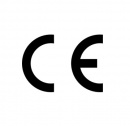RUT240 CE/RED
The Radio Equipment Directive (2014/53/EU) ensures a Single Market for radio equipment by setting essential requirements for safety and health, electromagnetic compatibility, and the efficient use of the radio spectrum.
Description
It applies to all products using the radio frequency spectrum. It has been applicable since 13 June 2016. As of 13 June 2017 the new set of requirements of RED are applicable to the equipment.
According to RED directive, the conformity against the following requirements needs to be demonstrated:
- 3.1(a): Radio equipment shall be constructed so as to ensure the protection of health and safety of persons and of domestic animals and the protection of property, including the objectives with respect to safety requirements set out in Directive 2014/35/EU (LVD), but with no voltage limit applying;
- 3.1(b): Radio equipment shall be constructed so as to ensure an adequate level of electromagnetic compatibility as set out in Directive 2014/30/EU (EMCD).
- 3.2: Radio equipment shall be so constructed that it both effectively uses and supports the efficient use of radio spectrum in order to avoid harmful interference.
Starting with 20 December 2020 only the EN62368-1 will be accepted as a proof of conformity for LVD part of CE RED requirements.
Disclaimer:
Test reports that are referenced in declarations and certificates can be provided upon request. For the request to be approved, the recipient of the test reports should be a certification authority or certified test house. The recipients will be asked to sign a non-disclosure agreement (NDA).
Standards applied
| Field name | Value | Description |
| EN 60950–1:2006 + A1:2010 + A2:2013 + A11:2009 + A12:2011
IEC 60950–1:2005 (Second Edition) + A1:2009 + A2:2013 CSA C22.2 No. 60950–1:2007 + A1:2011 + A2:2014 UL60950-1:2007 (Second Edition) + A1:2011 + A2:2014 |
Health and safety - Article 3.1(a) | T223-0271/17
T223-0271/17 T223-0271/17 T223-0271/17 |
| IPv4 address | ip; Default: " " | Your router’s address on the WAN network |
|---|---|---|
| IPv4 netmask | ip; Default: 255.255.255.0 | Netmask defines how "large" a network is |
| IPv4 gateway | ip; Default: " " | The address where the router will send all the outgoing traffic |
| IPv4 broadcast | ip; Default: " " | IP broadcasts are used by BOOTP and DHCP clients to find and send requests to their respective servers |
| Use custom DNS servers | ip; Default: " " | When the router needs to resolve a hostname (“www.google.com”, “www.cnn.com”, etc.) to an IP address, it will forward all the DNS requests to the gateway. By entering custom DNS servers the router will take care of the host name resolution. You can enter multiple DNS servers to provide redundancy in case one of the servers fails |
External links
https://ec.europa.eu/growth/single-market/european-standards/harmonised-standards/red_en
